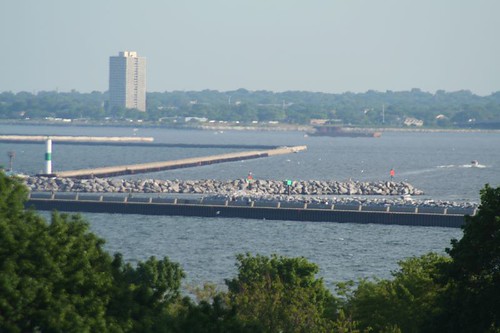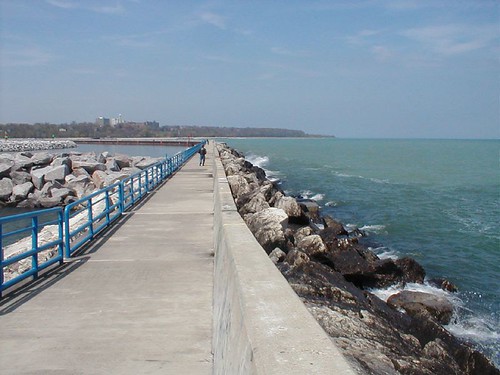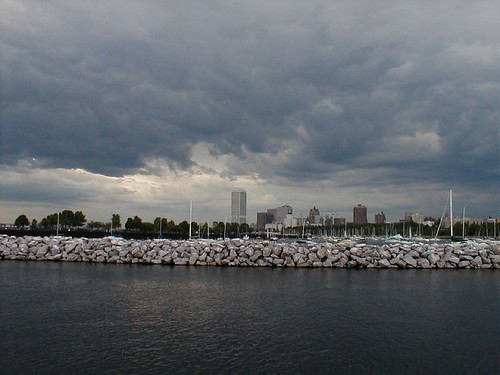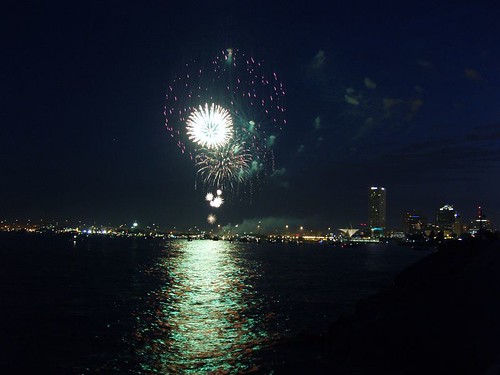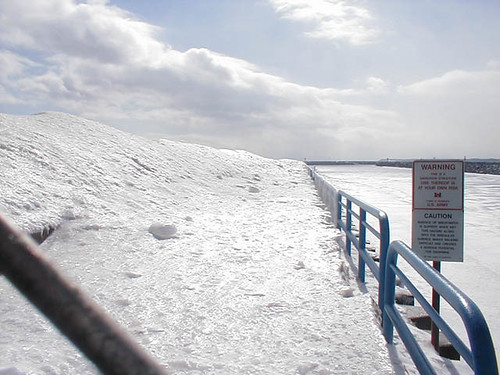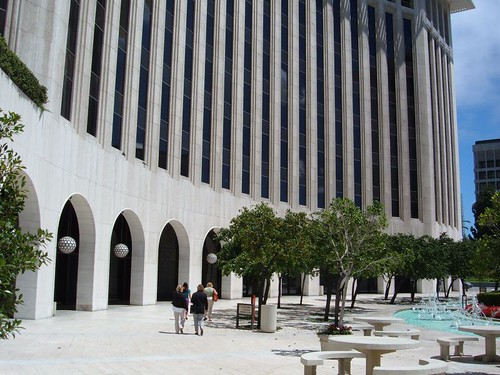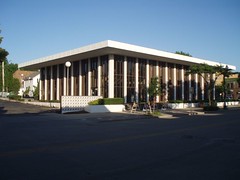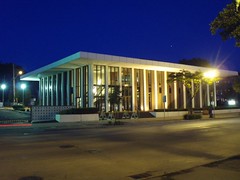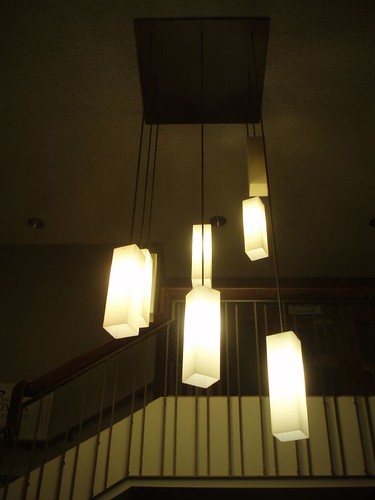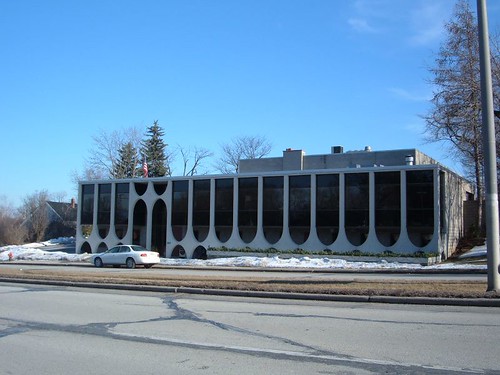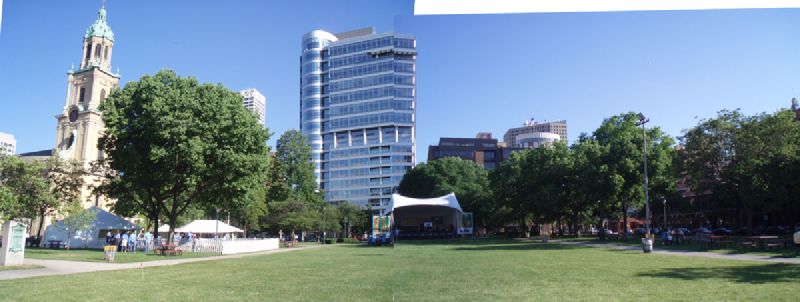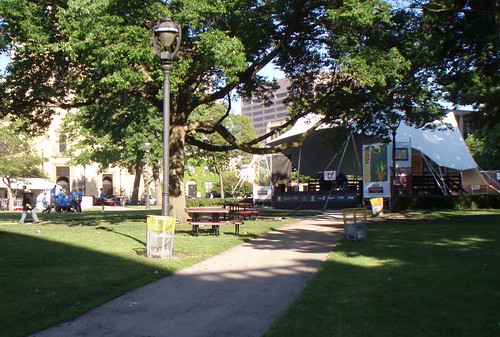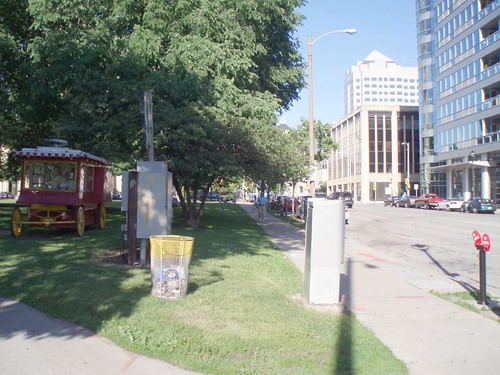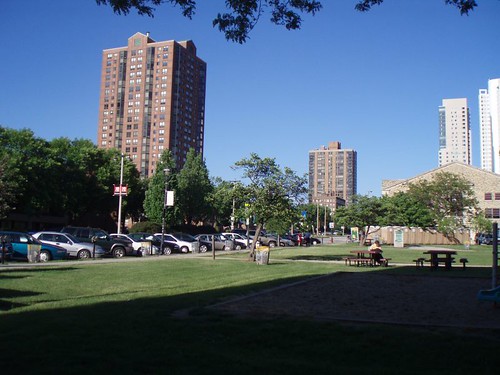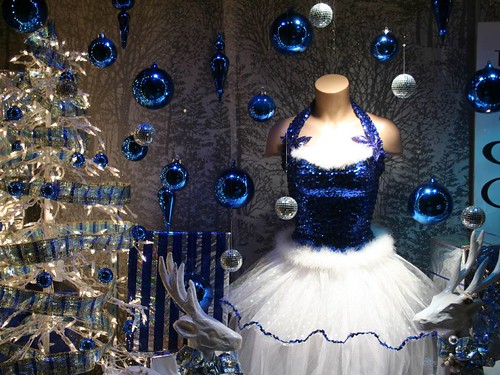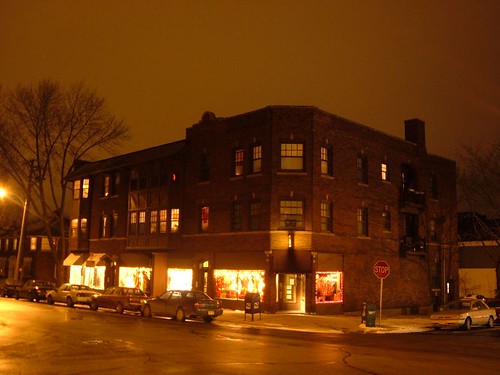Jazz in the Park, overcrowded as it is, probably isn't going anywhere. It is organized and sponsored by the nearby businesses that benefit from its proximity, and any other location would fail to bring them that business (though it's easy to imagine them providing some kind of festival-style tents at a different location, it'd also be a huge hassle.)
So if that's the case, if Jazz in the Park is going to remain a defining feature of Cathedral Square... shouldn't the park's design reflect that fact?
Shouldn't there be a permanent stage, instead of a clearly-temporary tent, which smothers the park's central design element?
Looking to the park's past, it's immediately clear where a permanent stage should be located:
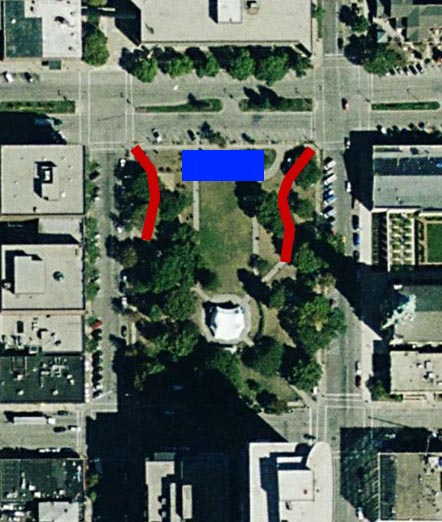
The north end of the park once held the county courthouse. A new permanent stage could be located there without disturbing the park's basic form. The benefits would be numerous.
For one, if it was designed as a sufficiently substantial construct, it could consolidate a number of functions which are currently left haphazardly scattered around the temporary stage: storage, bathrooms, and whatever functions the mobile trailer parked behind the stage serves.
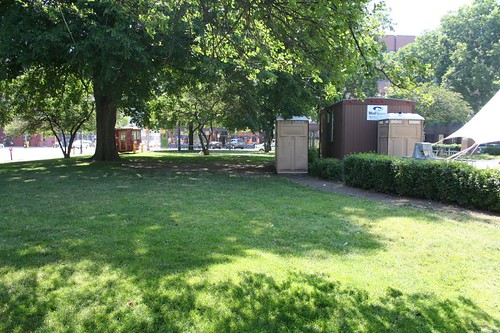
A large number of Port-a-Potties are left sitting around in the park all summer, and it really just looks like hell. They're Port-a-Potties -- they're made for construction sites, not green space. It's not how you're supposed to treat a respectable major urban park. Even if a new stage didn't include the same number of toilets, it could include some kind of screened section where additional portables could be located for the summer. Alternately, two separate sets of bathrooms could be provided, a small set for everyday use and a larger pair opened only on Thursday evenings.
Second: a new stage at this location would allow all that space that's behind the current stage to become viewer seating, and make it much more pleasant when Jazz in the Park's not in session by getting rid of all the temporary junk. If the new stage backs up all the way to the sidewalk, the park could actually gain useful space for Thursday nights. At worst it'd be a break-even situation.
Third (and I don't know how much of a concern this is, but it's worth mentioning), it would have the audience with the sun at their backs, which is usually nicer than squinting into it.
Fourth: it would provide a badly needed sense of spatial closure at the park's north end.
Fifth: it'd be the perfect time to reconsider the rest of the park's detailing. I complained earlier about the park's unappealing pathways. Some simple additions could completely alter the feel of the park:
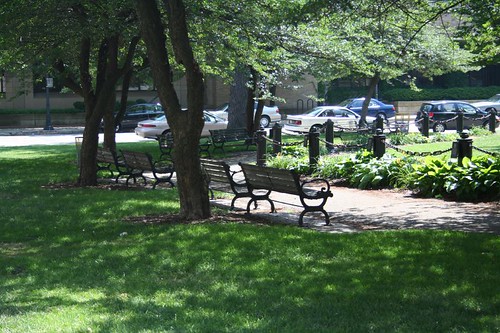
That's Zeilder Park downtown. A few simple elements transform a plain asphalt walk into a place that invites one to linger and relax. Half-walls and permanent picnic tables could achieve the same along Cathedral Square's edges.
So what're the drawbacks?
Money, money, and money. Putting up a substantial building with electricty and plumbing is not an insignificant undertaking, nor is maintaining it year-round. Time, also -- such a construction project could shut half the park down for a year or more, including an entire summer.
Spatially, the park would lose some of its central green space where the stage would be, though what remained would be a nicer space for it. In an ideal world, we could poach ten or fifteen feet off of E. Kilbourn Avenue -- look how ridiculously huge it is! In reality, it'd probably be very difficult to make it happen. Removing the two central paths in favor of paths near the park's edges could also compensate for the loss.
As I said before, the powers that be should consider options. If Jazz in the Park is truly here for good, then the park that hosts it ought to be treated accordingly.
